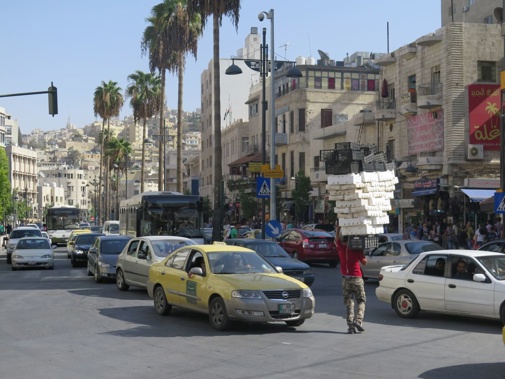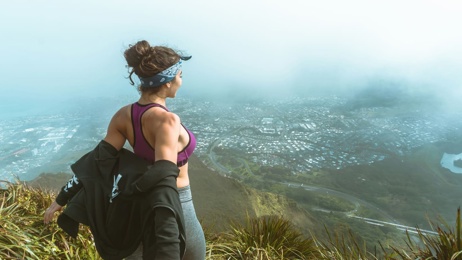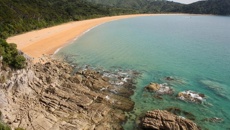
Jordan finds itself positioned in a tough and raucous neighbourhood, surrounded by Syria, Iraq, the West Bank, Israel and Saudi Arabia. I was somewhat apprehensive tripping to little Jordan this month, given so many of its nearest neighbours are tinder-boxes wracked with horrific violence. But from the moment I touched down in Amman, I immediately felt embraced by the welcoming warmth of Jordanian hospitality. In stark contrast to the hostilities and flash-points that flare up far too regularly across her borders, Jordan feels refreshingly safe and stable.
Amman, which has only been the capital city since 1921, was little more than a muddy farming village 100 hundred years ago. Like much of Jordan, most Ammanis identify themselves as originating from somewhere else, whether it be the waves of refugees from Iraq and Syria or the millions of Palestinians that have found safe refuge in Amman. Add to that the semi-nomadic native Bedouin. Not only is Amman an ethnic melting pot, but it is a religiously embracing Middle Eastern beacon, a moderate, tolerant and modern Arab nation. Islam predominates as the overwhelming religion, but Christians and Muslims happily live side by side.
For many travellers to Jordan, Amman is simply the launch-pad to the desert delights of Wadi Rum, Petra and the Dead Sea. But Amman boasts some striking attractions that fully justify spending a few nights in the city. It may have only been Jordan’s capital for less than a century, but pockets of Amman boast a weight of history stretching back many millennia.
Did you know that the historic core of Amman was previously called Philadelphia? After Alexander the Great conquered the region in 332 BC, his successor Ptolemy II Philadelphus rebuilt the area, which was called Rabbah, and vain-gloriously renamed it Philadelphia, the “city of brotherly love”. The name stuck for centuries, with the Romans rolling into town and through the Byzantine age, until the Arabs conquered the city in 635AD, recognising it as Amman, although the city’s significance steadily waned over the subsequent centuries.
Under the Ottomans, Amman’s fabled hills served only as pastoral land for the local Bedouin farmers. Amman is absolutely a city of hills and the urban landscape is dramatically laid-out on valley-beds and clinging to the side of steep hills. I started my exploratory in the historical district known as Downtown, where Roman Philadelphia flourished.
The Romans constructed grand public buildings, a huge forum and classic arenas. Artfully cut into a depression in the hillside, the wonderful Roman Theatre which has stood the test of time is impressively sized with time-honoured acoustics. The 6000 seater theatre was built 1900 years ago as the showpiece of Roman Philadelphia and it’s still regularly used for concerts. Immediately outside the theatre are the remains of the Roman Forum, with a scattering of stones and a graceful colonnade Corinthian columns testifying to its past.
Gazing across the city centre from the theatre, I was struck by the towering stone pillars of the Temple of Hercules, silhouetted against the sky. The ruins of this temple crown Citadel Hill, which is also known as Jabal Al Qal’a, and it’s a wonderful location to unpeel the many layers of Amman’s intriguing history. The citadel is situated on the top of one of the city’s original seven hills, steeped in 7000 years of history. It’s an incredibly lofty perch to size up the topography of Amman, it’s incredibly high-density layout, as the evocative call to prayer wafts through the valley. Every conqueror from the Assyrians and Romans to the Ottomans has left their mark here on Citadel Hill. Highlights include the partially restored and unquestionably imposing Temple of Hercules, the 8th century Umayyad palace and the Byzantine church complex ruins. Want to catch a great sunset? This is a dream spot to take in the solar theatrics, while the city lights begin to twinkle on the sloping valleys below.
I loved stretching my legs on a photogenic stroll through the heart of town on King Faisal St, taking in the traditional shops, bustling markets, ambient cafes and general city vibe which is friendly, frenetic and aromatic. I saw delivery workers balancing 20 produce trays on their heads, old-school coffee roasters and grinders churning out Arabic coffee, and roadside bakers flaunting their finest filo pastry treats. Want to try some great street snacks? Habiba is a much-loved local purveyor of Arabic sweets, but the best experience is to check out their thriving little outlet hidden down an alleyway beside the Arab Bank building, just off King Faisal Street.
This tiny shop is famed for its knafeh – a Palestinian dessert from Nablus made of shredded filo pastry and goat's cheese, served hot, drenched in syrup. Night and day there's a billowing line of locals outside, leaning against the wall, forking fresh-made knafeh off paper plates – all revelling in this shared, sugar-happy endeavour. True to Jordanian form, visitors are made to feel so welcome, with many locals extolling you to jump ahead of the queue. Don’t miss the steep set of stairs, jutting off King Faisal Street, merrily festooned in multi-coloured umbrellas.
But Amman’s most famous thoroughfare is probably Rainbow Street. Don’t be misled by its name, Rainbow Street is not Jordan’s gay mecca, rather it’s a foodie mecca, throbbing traditional coffee houses, swanky bars, cosy hideaways, edgy street-food hangouts and high-end restaurants. This cobblestoned street takes its name from grand old Rainbow Cinema, which is now fully restored. Amongst this whirl of epicurean temptation, be sure to try what many locals would argue is one of Jordan’s main dishes: Maqlooba. This Palestinian Arab dish usually consists of chicken, vegetables, rice and quality spices, stacked and packed into a saucepan. Maqlooba means “upside down” in Arabic, which is apt, because the entire meal is served upside down, much like a Spanish Tortilla.
Just outside Amman, two enriching excursions that can be easily accomplished in half a day, are to Madaba and Mt. Nebo. The latter is of course heavily wreathed in biblical heritage, as it is from here that Moses, following God’s navigational guidance, cast his eyes on the Promised Land. According to the Bible, having led the Israelites for forty years through the wilderness, Moses finally saw, from this dizzy vantage point, the Promised Land that God had forbidden him to enter. Moses supposedly died and was buried on or near the mountain, while his brother Joshua led the Israelites into Canaan. It was a beautifully bright and clear day when I gazed out westward from the summit, readily identifying the Dead Sea and the hills of Jerusalem.
Also worth a visit, is the nearby ancient town of Madaba. This easy-going market town is feted for its extraordinary Byzantine mosaics. The most famous artwork is the 6th Century Mosaic map of the Holy Land, which woos the world to the Church of the Apostles. During clearance work for a new church in 1884, this treasure was uncovered. It’s a remarkably intricate and detailed illustration of all the key Holy Land sites. What makes it all the more staggering is that despite it being 1500 years old, it is geographically accurate. Archaeologists are still regularly uncovering ancient mosaics, beneath the streets of Madaba. The town is also home to the Jordan River Foundation, a wonderful venture established in 1995 by Queen Noor and now chaired by Queen Rania. The foundation trains orphaned and disadvantaged young Jordanians in mosaic craft work. They have a sublime showroom of their exquisite products, which provides plenty of tempting ideas for authentic souvenirs and cherished gifts.
Getting There? Amman, Jordan is easily reached with a 3 hour flight from Dubai. Emirates operates high-frequency flights, daily, between Dubai and Amman. Plus if you’re sizing up a wider journey across the Jordan River to the West Bank and Israel, Amman is a popular launch-pad.
Mike Yardley is Newstalk ZB’s Travel Correspondent on Jack Tame Saturdays. 11.20am
Take your Radio, Podcasts and Music with you









